20 - 07 - 2021
By BPTW Partner Neill Campbell and Sharon Donald, previously the New Homes Development and Strategy Manager at Gravesham Borough Council.
With increasing pressure on housing stock and a limited supply of homes nationally, innovative approaches to rightsizing are critical in addressing the housing crisis and encouraging people to live in homes that fit their needs. BPTW and Gravesham Borough Council explore the challenges and successes of their collaborative approach to rightsizing, and how their inventive later living residential developments have accelerated housing supply across Gravesham.
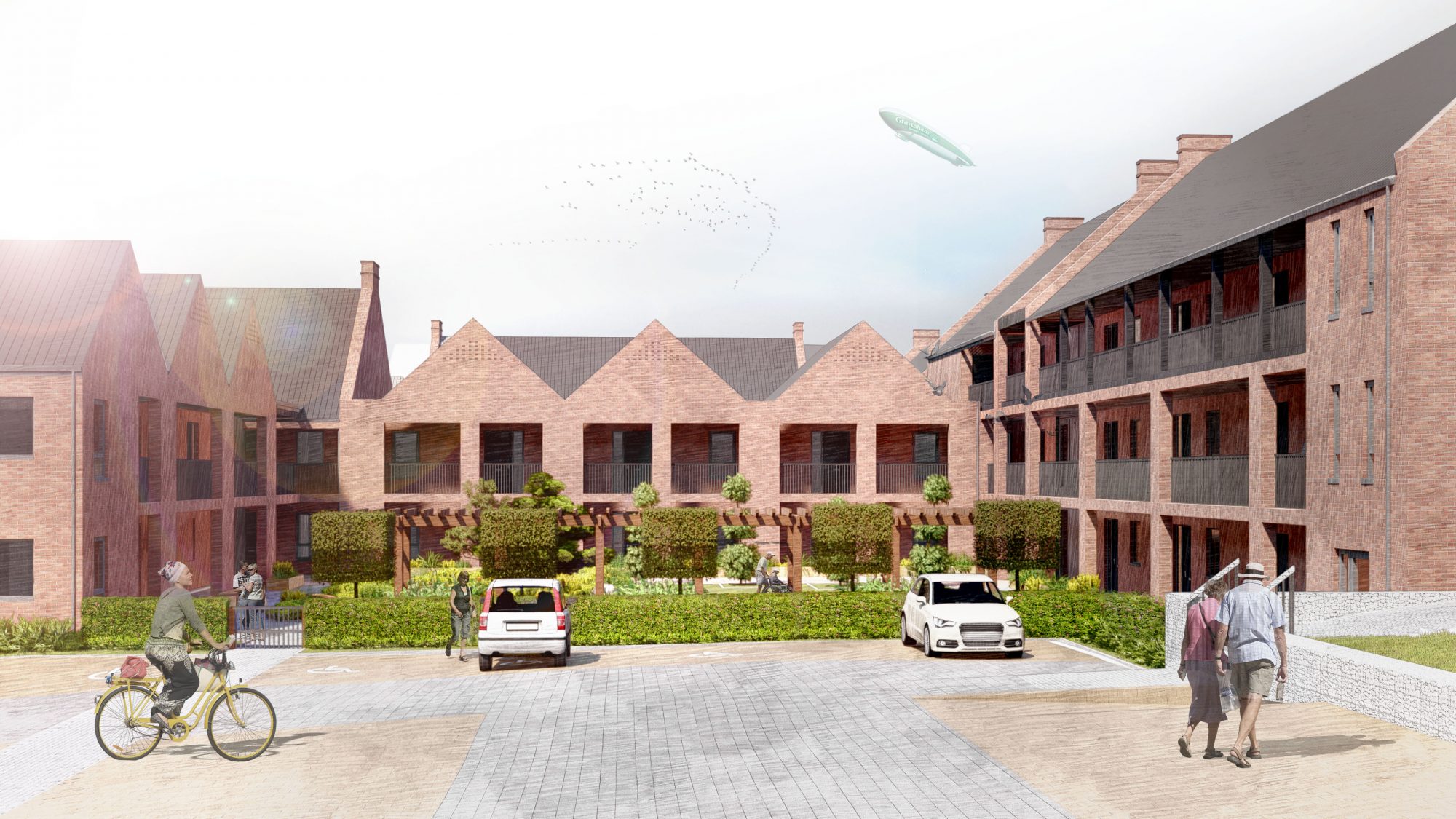
Recognising the challenge
Tenants under occupying larger family homes is a prime concern for all local authority housing providers, and actions to free up social housing can be difficult to implement. Many tenants may not consider applying for a transfer to move to a more appropriately sized home. This can leave councils unaware that a need to move exists and limit their opportunities to unlock the ‘housing chain’.

By talking with its tenants, GBC recognises that many people are reluctant to down-size and move out of their family home because there is nothing they want to move to and nothing that meets their needs. The existing housing options for older residents such as sheltered housing is inappropriate for many active older people. Furthermore, many people targeted for downsizing have lived in their homes for many years. They have created memories and communities in these places, and it is unlikely that a decision to move will happen without new, good-quality homes that exceed their expectations. Over the years GBC’s Housing and Development Team have often be told, “I’m not old enough for sheltered”, or “I can’t move to a one-bed”, and “what about my garden?” GBC needed to look at alternative options to increase the availability of existing social housing and encourage those people under-occupying to see rightsizing as a positive move.
First steps
In 2011, GBC built the first council homes in Gravesham for twenty years. By signing an agreement with the Government to retain receipts from the sale of council homes through Right to Buy, GBC reinvested this funding to deliver homes for local people. Having appointed BPTW, three development sites for residential use were identified, including one for active, older tenants.
Completed in 2015, the scheme of 12 homes proved very popular and helped the council to free up several two, three and four-bedroom homes while the other two sites provided homes for families and people with disabilities. Inspired by the projects’ success, BPTW was appointed to look at wider development opportunities including those for later living homes.
Understanding housing need
Through discussions with GBC about the challenges of ‘rightsizing’ and the existing lack of choice for residents, BPTW developed specific housing typologies to meet this later living need. Together, a brief was developed around key factors that proved pivotal in creating desirable homes for older people, including:
- Amenity spaces – older residents were used to living in a house with a garden, and in most cases, they had done so for many years.
- Room for all the family – as a previously established family home and with their children moved out, residents were used to lots of extra space with room for family to visit.
- The feel of ‘home’ – their homes had a front and back door, and the traditional, domestic scale of their homes was desirable.
- Opportunities for neighbourliness and communities – living in a well-established community, neighbours had been a big part of residents’ lives for many years.
- Recognising diversity and difference – each household has different needs; this may be a disability, issues around the running costs of a larger house, managing a large garden, or regular visiting relatives of carers.
Working collaboratively, BPTW and GBC developed two core housing typologies to meet this brief, although completed in different ways.
Solutions: The one-bedroom plus home
BPTW developed an enhanced model of a one-bedroom bungalow with an additional living space in the roof, referred to as the ‘one-bedroom plus’ typology. Flexibility in layout and functionality to make the home adaptable for the future is key. The main living and sleeping spaces, along with the bathroom, are provided on one level for accessibility and to offer direct access to the garden or terrace. The inclusion of an extra flexible space upstairs provides a room for hobbies, for family and friends to stay, or for a potential carer.
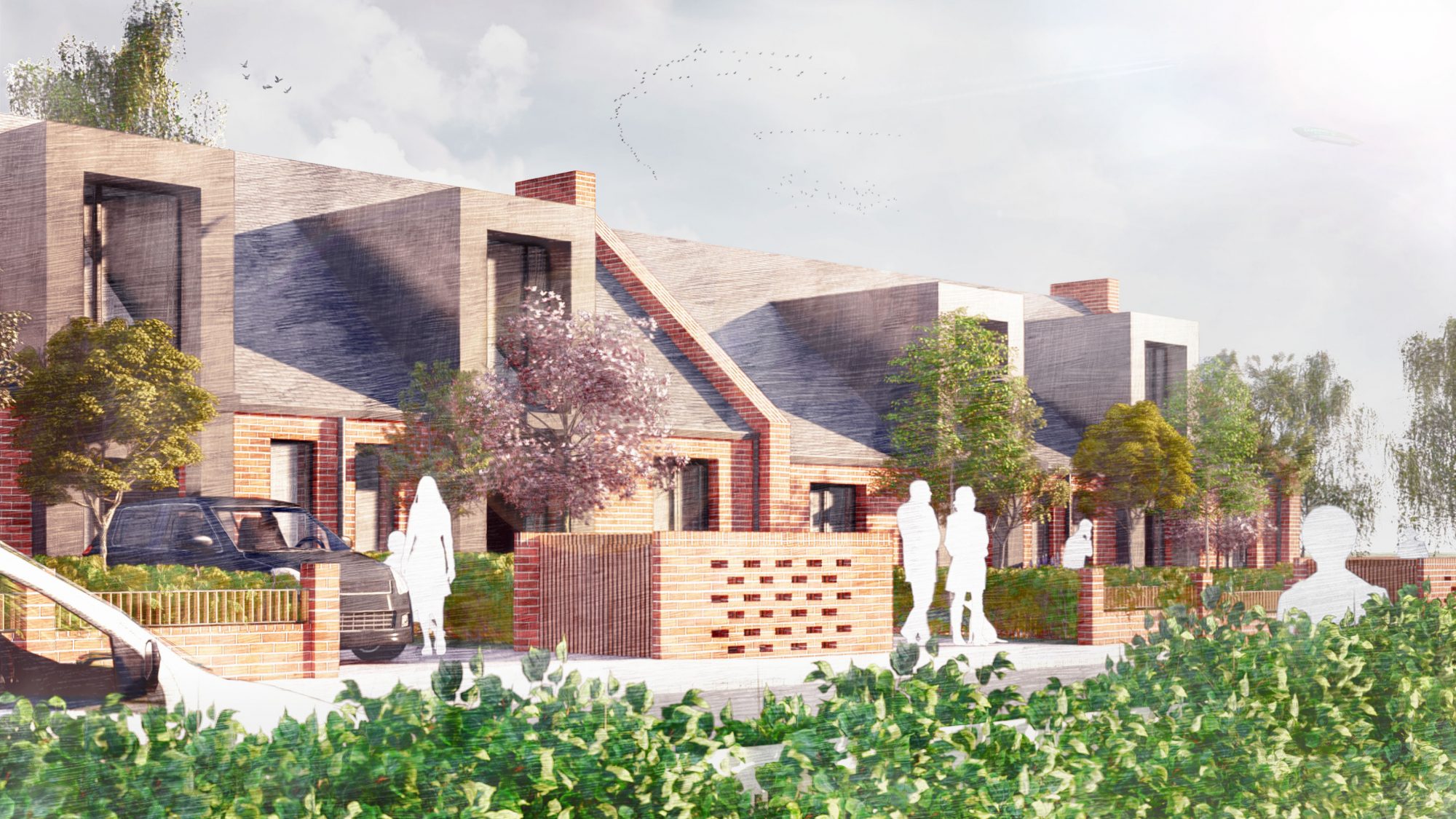
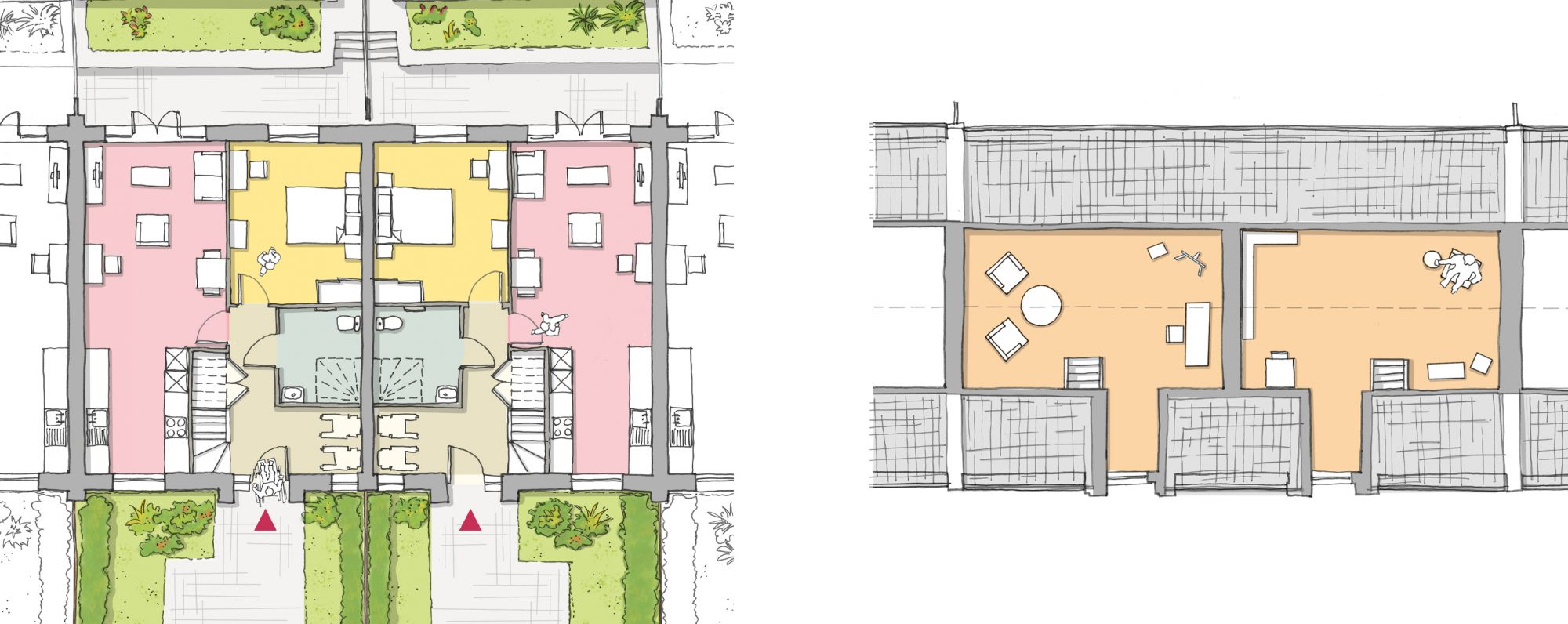
Designed as a repeating typology, the one-bedroom plus home can been used easily and efficiently across sites in Gravesham. Small amendments to the design can accommodate site-specific issues and planning policy differences between development sites. Delivered on a site in Northfleet, three of these one-bedroom plus homes were so heavily over-subscribed that GBC are looking to deliver more across the borough. The residents’ responses in the post occupancy reports have also been positive.
The next major steps for this typology include the integration of off-site fabrication and the enhancement of the design to meet the council’s zero carbon aspirations. BPTW and GBC continue to receive and evaluate customer feedback to develop this design and conduct further research into rightsizing.
Solutions: Valley Drive
Valley Drive in Gravesend is one of GBC’s and BPTW’s most recent collaborations that further encourages under occupiers to downsize to a home that is easier to manage and better meets their needs now and in the future. The design represents similar aspirations to the one-bedroom plus home, but this time in the form of apartments and duplex homes.
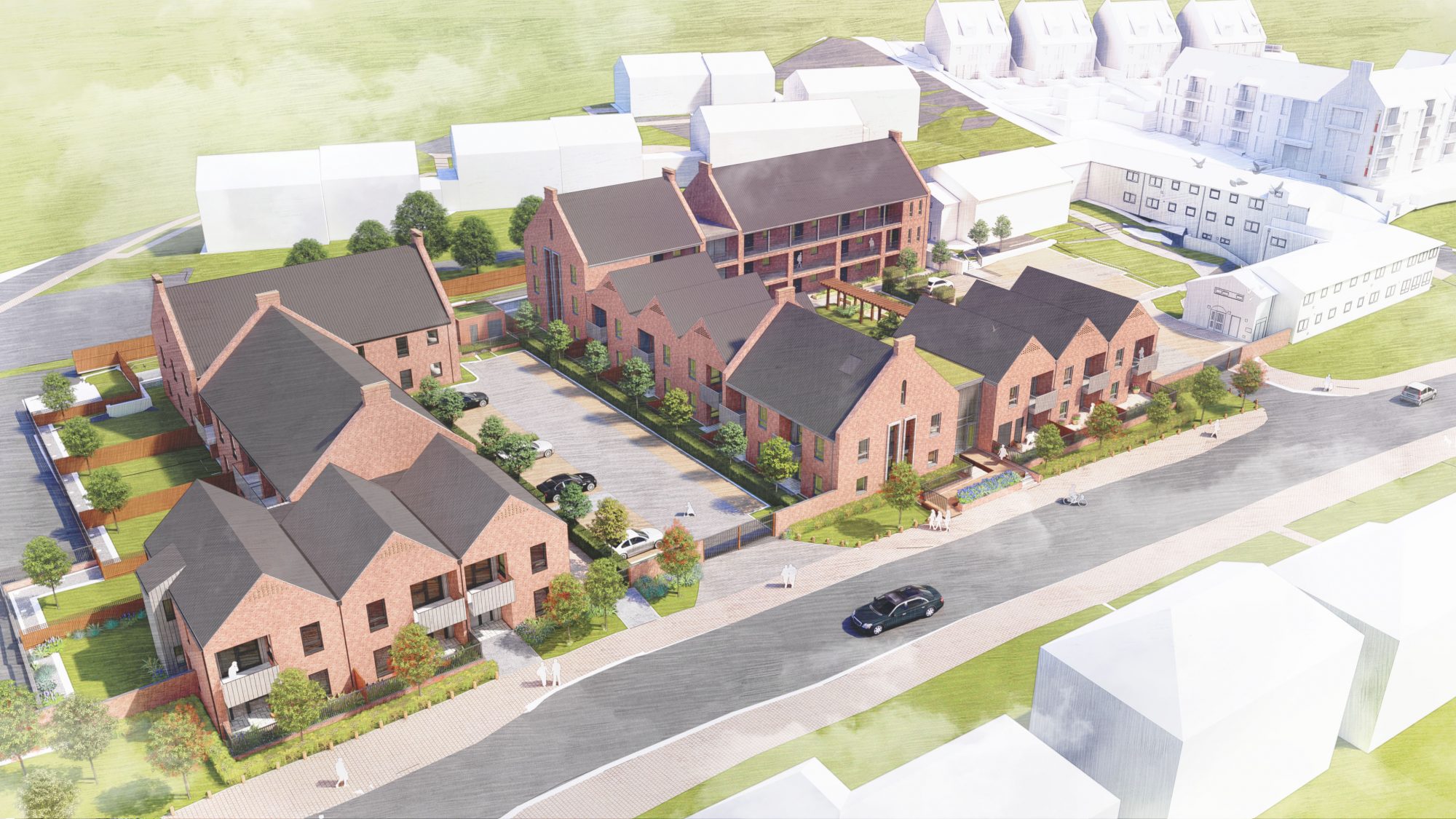
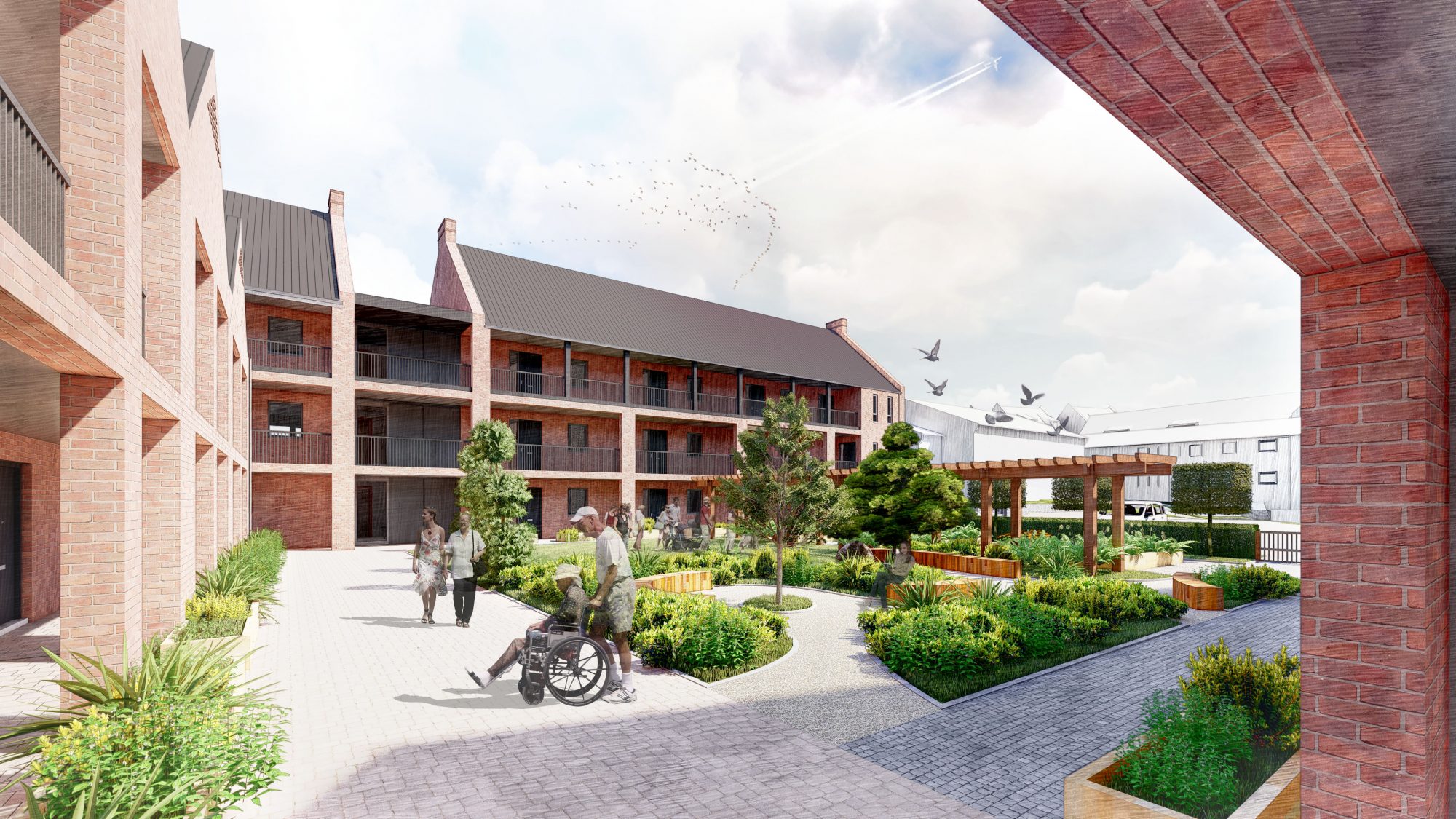
Designed in two-phases, Valley Drive and Whitehill Lane provide a total of 80 100% affordable homes, including 24 apartments and eight houses in phase one, and 32 independent later living apartments and 16 one and two-bedroom general needs apartments in phase two. The mix of typologies is intended to attract the ‘right-sizer’, including one-bedroom apartments with an additional study, a substantial balcony, winter garden, and a communal garden, and one-bedroom duplex homes that provide an additional flexible space in the roof and ground-floor living space with a private garden similar to the one-bedroom plus typology. The homes accommodate other features desired by residents including front and back doors, dual-aspect internal layouts and arrangements to provide space for neighbourly interactions. All homes were designed to be accessible and adaptable, with some being fully wheelchair compliant.
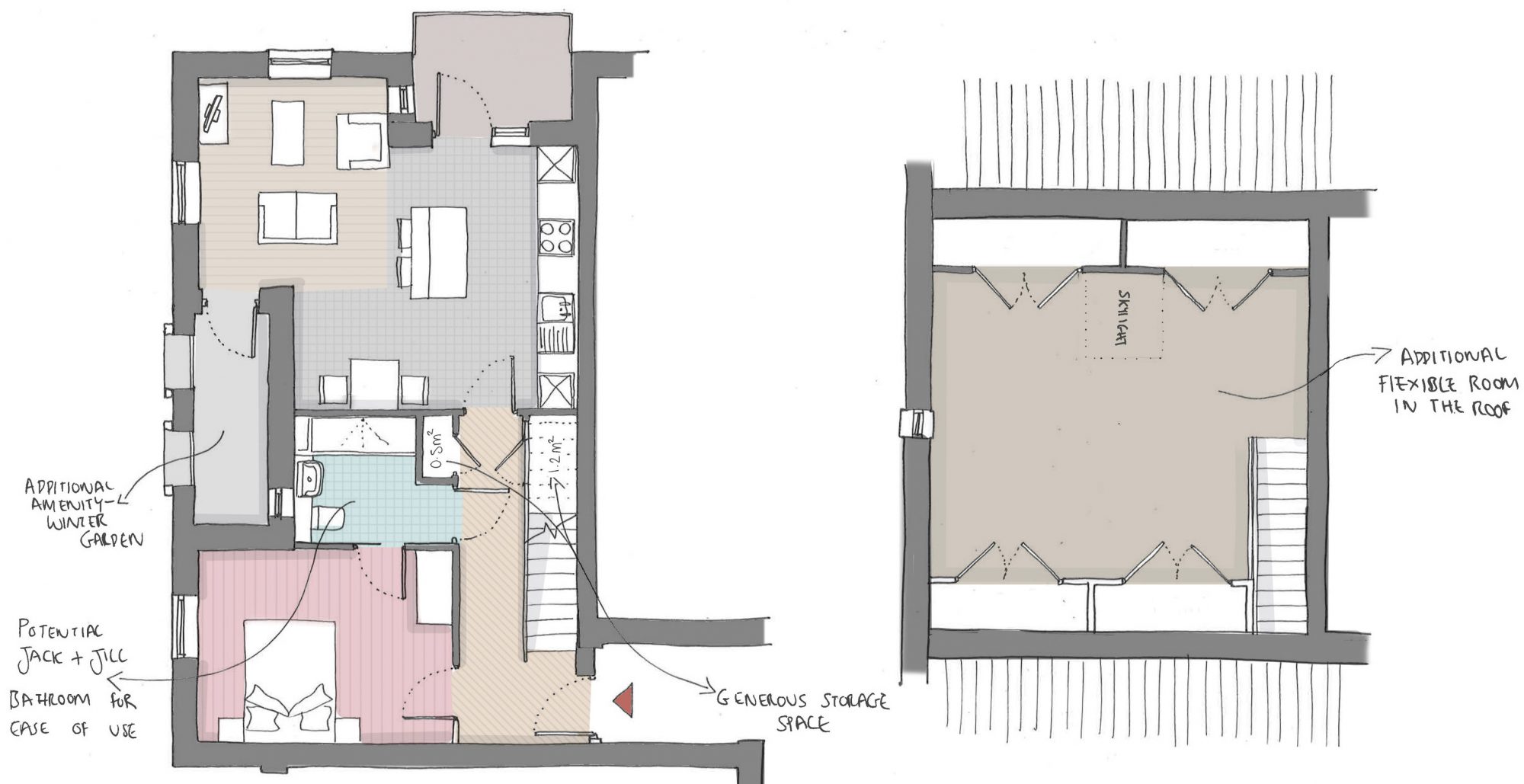
The key to the success of this scheme is the quality of the amenity spaces. Generous external communal amenity spaces for all homes are offered through the landscaped courtyard garden and the winter gardens that make communal amenity accessible all year round. The quality of this scheme was recognised by its shortlisting for the 2020 Housing Design Awards. The final phase secured planning permission with unanimous approval in May of this year and is currently in the tender process with an anticipated start on site date of next Spring.
Further developments
GBC continues to monitor trends in housing need, receiving data regularly to identify the number of applicants registered for housing with a one, two, three or four-bedroom need and those who require specialist housing. Although existing data shows that there are approximately 220 applicants over 55 years of age who are waiting for a one-bedroom home, GBC acknowledges that this figure is likely to be much larger as many older tenants may not have registered for a transfer.
In early 2016, GBC appointed BPTW to investigate wider opportunities in the North East of the borough. Through its analysis, BPTW identified half a dozen infill sites in the area and developed a masterplan to maximise the land. Presenting these proposals to GBC’s Housing Committee later in 2016, support was secured to move forward with the sites which are anticipated to deliver around 150 homes. To date, GBC and BPTW have secured planning permission for three of these sites, with two currently in construction and wider opportunities in the borough being explored.
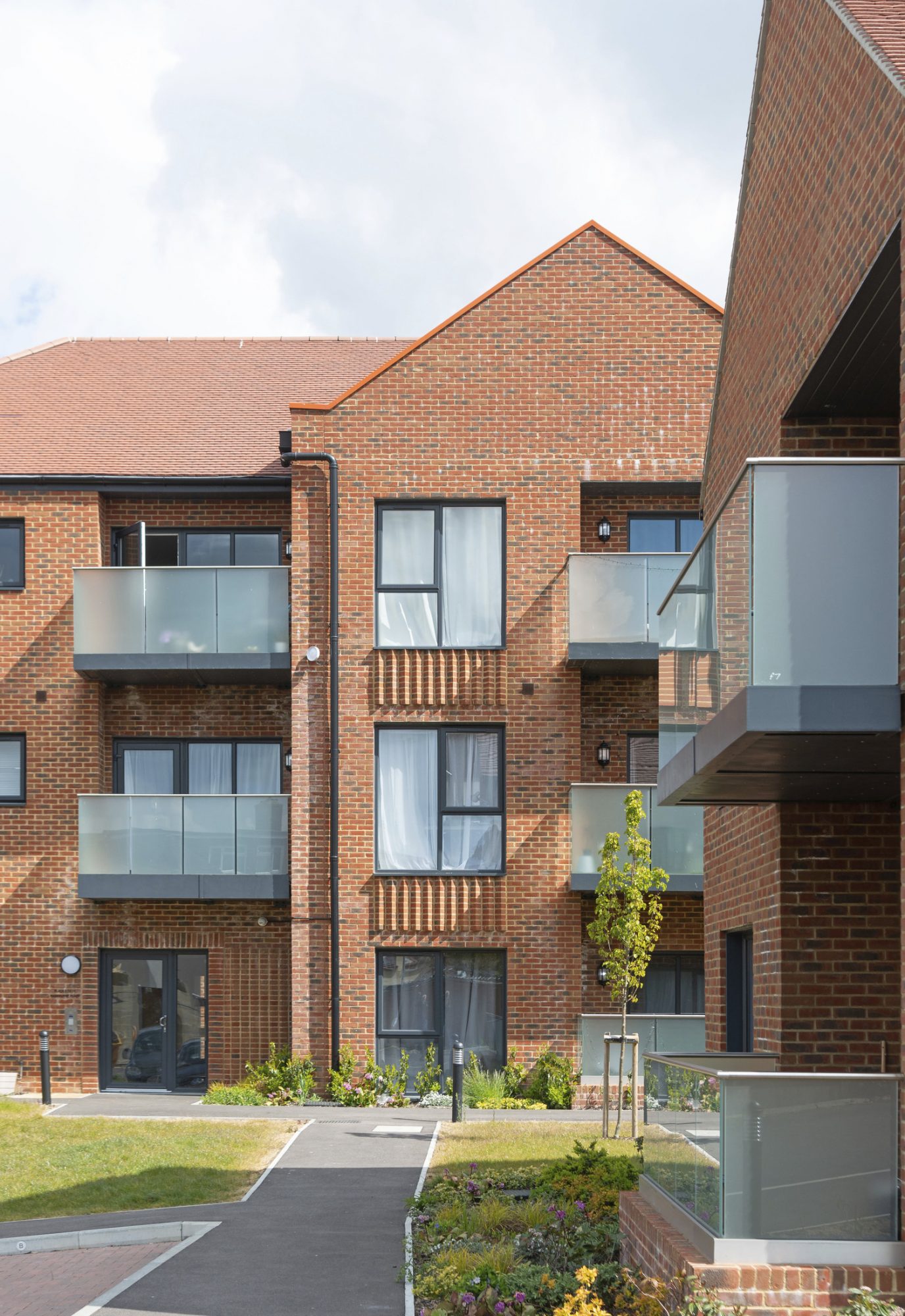
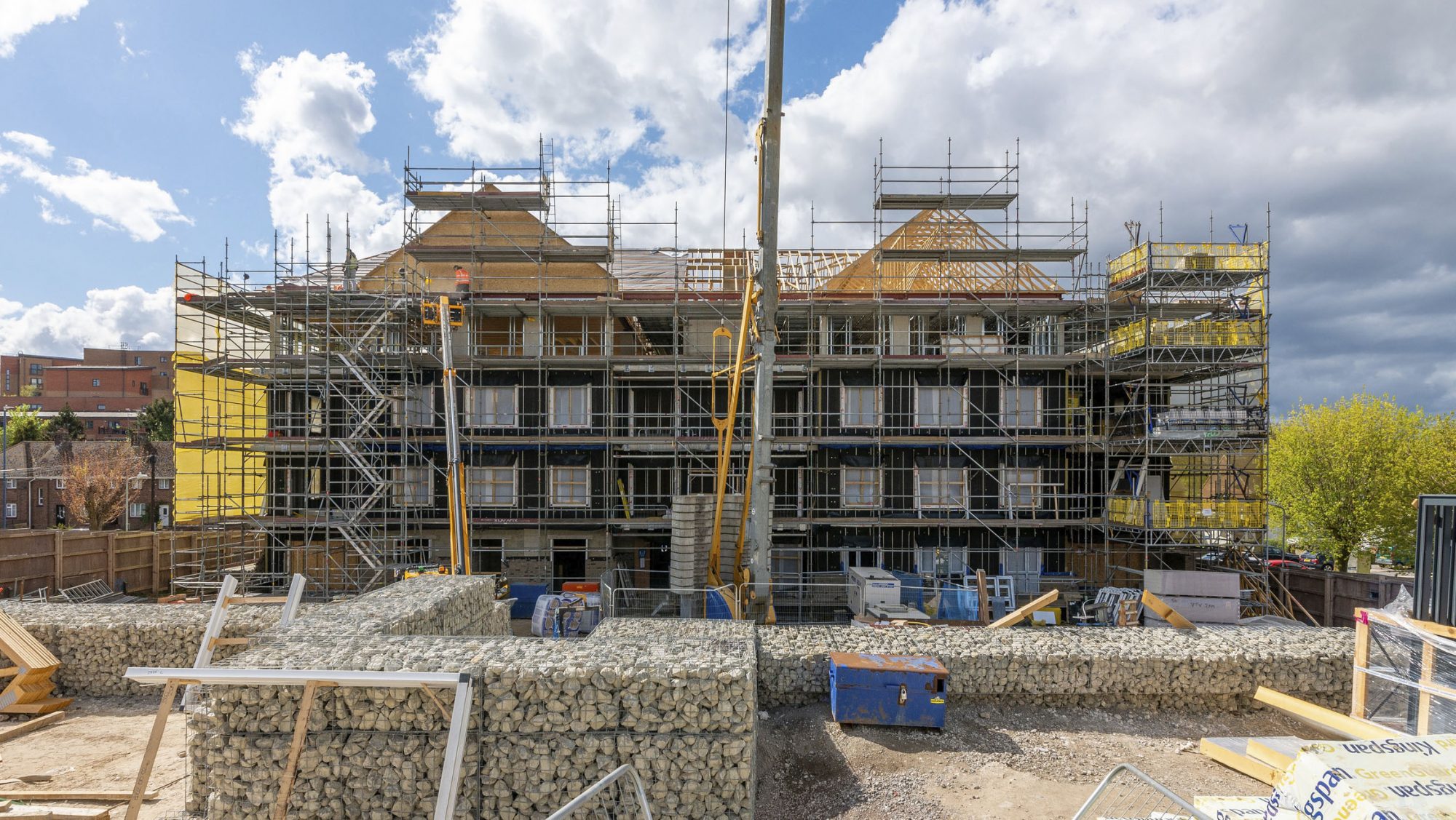
How has this impacted housing supply?
By carefully considering each site in terms of location and local need, GBC has and continues to create movement in housing stock, reducing overcrowding, and encouraging older residents to downsize to new homes that better meet their needs and are more energy efficient and cost effective to run. The wheelchair accessible homes have transformed lives, achieved though GBC’s collaboration with BPTW, other consultants and contractors, colleagues, occupational therapists, and residents themselves to make sure the homes are suitable from day one.
Well-designed later living homes, such as Valley Drive, provide desirable places for residents to live when they need and want to. This in turn unlocks the chain of housing assets and makes larger family homes available for younger generations to start families of their own. For instance, building one later living home could bring forward another four houses for waiting applicants. By thinking carefully about local housing need, what makes a home desirable, and the development capacity of the sites in its ownership, GBC has begun to create sustainable and strategic momentum in its housing stock.
Future aspirations
GBC continues to seek out development opportunities on land in its ownership, including existing council estates with regeneration opportunities. Officers from across the council work to identify redundant or under-used land as they go about their day-to-day business, and in this way, the council’s portfolio of potential residential sites grows.
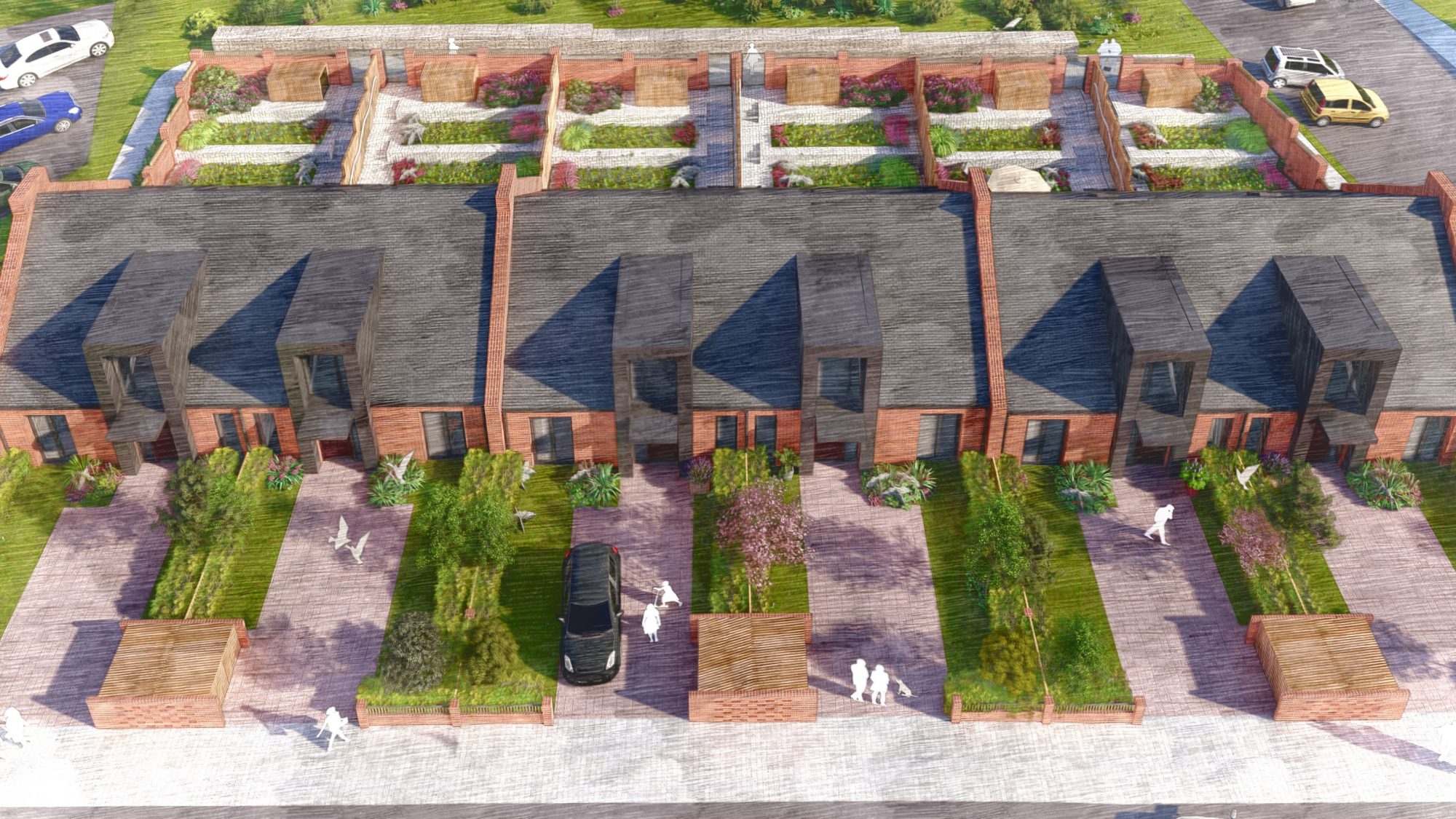
Critically, GBC is working hard to add extra capacity to its housing stock through collaborations with BPTW and others. This in turn will increase the council’s income, allowing it to make the best use of council-owned land and provide social housing at a time when council homes have fallen to an all-time low. GBC is determined to use funding from Right to Buy receipts to deliver homes for local people rather than hand money back to the Government. In order to do this, the Housing and Development Team continues to work closely and have excellent relationships with BPTW and all its consultants.
Invigorated by its development success and aspirations for the future, GBC has 100s of affordable homes in the pipeline. The team are in conversations with Homes England to reregister as an investment partner to hopefully benefit from the AHP 2021-26 and continue on their development trajectory. Ultimately, the purpose of these efforts is to provide a wider, better choice to Gravesham residents through quality social and affordable homes, and perhaps in the future, other tenures too.
Neill and Sharon presented their collaborative work to tackle rightsizing and achieve momentum in housing stock at The Housing Forum’s Council Housing Spring Conference this May. BPTW is an active and long-term member of The Housing Forum and contributes frequently to talks and events that strive to raise the quality of housing in England. You can read more about these events on our Insights page.
Neill Campbell is a Partner at BPTW and has worked with Gravesham Borough Council for a decade. As a result of his extensive experience of council housebuilding, Neill regularly presents to professional bodies, such as the NLA, The Housing Forum and Future of London, on the development potential of residential sites across London and the South East. He also represents BPTW on Future of London’s Council-led Housing Forum.


